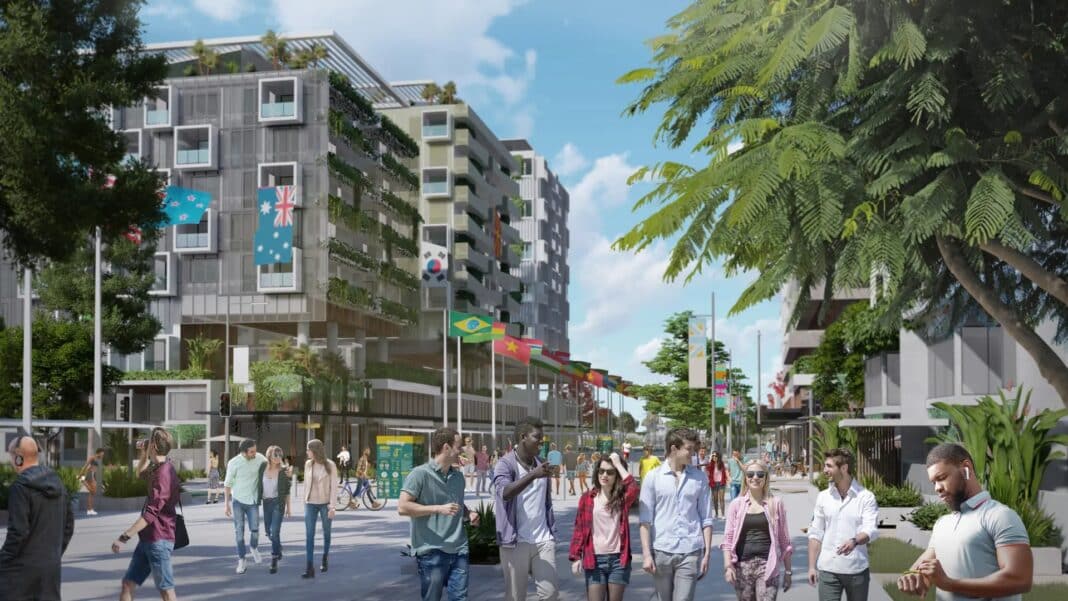The global eyes of wood construction are already fixed on Brisbane for the World Conference on Timber Engineering 2025, which will be hosted from June 22 to 25 by the University of Queensland, with support from the Australian Research Council’s ARC Advance Timber Hub.
Conference chair Professor Keith Crews this week announced around 700 speaker abstracts had been received, all addressing the theme ‘Advancing Timber for the Future Build Environment’.
Given the scale of the content and the international response to the event, the WCTE 2025 international scientific committee has extended the deadline for abstracts from June 24 to July 31 this year.
The committee welcomes group abstracts submitted with a specific focus session in mind and will try to accommodate session recommendations in the program design.
If there are collective abstracts for a specific session, one person from the group must present them.
“This will be the most prestigious international event in the field of timber technology for construction, timber structures and the design of timber architecture,” said Professor Keith Crews, who is also the director of the ARC Advance Timber Hub.
He said abstract submissions would embrace three focus areas – architectural, engineering and practitioner skills.
“The conference will highlight the advances and carbon benefits of timber construction, particularly for Queensland government stakeholders as they plan the 2032 Olympic venues and athlete accommodation,” Professor Crews said.
“The technical program will focus on the importance of research and development undertaken by the timber design and construction community in response to the increased demand from engineering and architectural firms, developers, and investors, who are now emphasising timber engineering as the preferred solution for many projects, including housing,
“Themes include material performance and durability, sustainability and timber in a circular economy, timber engineering and structural performance, timber architecture and biophilic design, education, innovation, and challenges, and examples and construction case studies.”
Professor Crews is supported on the conference executive committee by Professor Greg Nolan, deputy chair of the University of Tasmania, and Kelly Rischmiller, executive secretary of the University of Queensland/ARC Advance Timber Hub.
Conference sponsorships are invited in titanium, platinum, gold, silver and bronze categories, with naming rights offered for the gala conference dinner.
The committee is also developing an extensive social program that will include “a uniquely Australian way” to offset the conference’s carbon footprint by contributing to the creation of a full coral tree at the Great Barrier Reef.
Part of the participants’ registration fees will be allocated to the Reef Restoration Foundation’s Resilience and Recovery Program.
The WCTE 2025 Coral Tree has now been installed and delegates will be given ongoing updates on its progress via the conference web page leading up to the conference.
“Delegates will be encouraged to visit the Great Barrier Reef during their time in Queensland … and pay a visit to the WCTE 2025 Coral Tree.
The restoration foundation bolsters coral reef resilience and speeds up the natural process of recovery, slowing the rate of change and allowing species to adapt to the changing environment.
The program is designed to create and preserve coral spawning stock in the advantageous environment of mobile, midwater nurseries with a focus on species diversity and genetic diversity within species.
The program aims to achieve two core objectives: create a spawning stock that will produce hundreds of millions of additional coral larvae every year to help build resilience in the good times, lower mobile nurseries during periods of warm water or wild weather to preserve the spawning stock, and turbo-charge recovery in the bad times.
Meanwhile, the University of Queensland researchers are conducting a survey to assess the most relevant criteria regarding the disassembly ability of timber structures.
The survey is aimed at professionals in the construction sector, fastener/joint manufacturers, and individuals who have previously worked or are involved in timber construction.
The results of the survey will be used to create an intuitive tool to assess the disassemble ability of connections at an early stage of the design.






